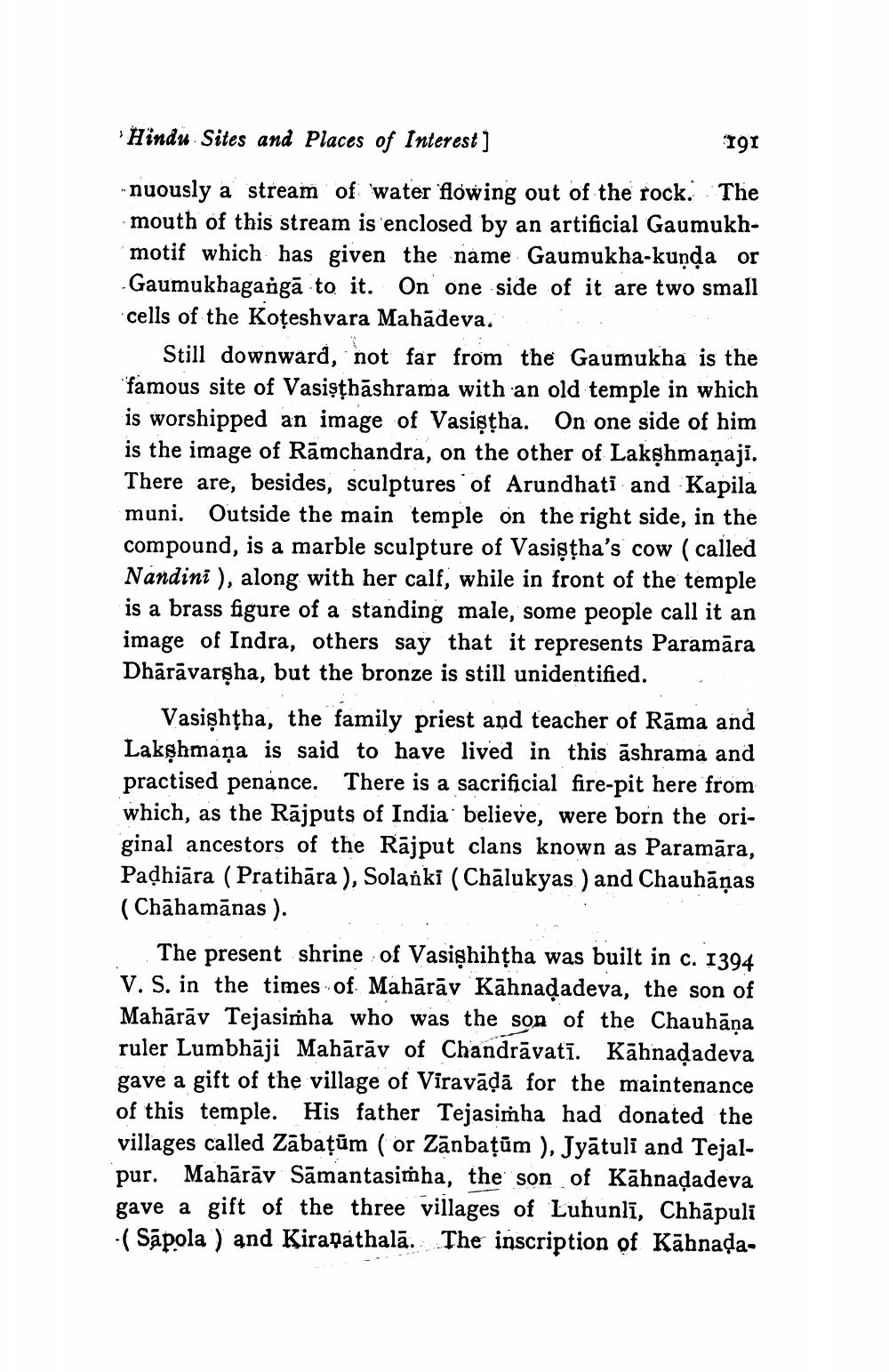________________
Hindu Sites and Places of Interest]
191
nuously a stream of water flowing out of the rock. The mouth of this stream is enclosed by an artificial Gaumukhmotif which has given the name Gaumukha-kunda or Gaumukhaganga to it. On one side of it are two small cells of the Koteshvara Mahadeva.
Still downward, not far from the Gaumukha is the famous site of Vasiṣṭhāshrama with an old temple in which is worshipped an image of Vasistha. On one side of him is the image of Ramchandra, on the other of Lakshmaṇaji. There are, besides, sculptures of Arundhati and Kapila muni. Outside the main temple on the right side, in the compound, is a marble sculpture of Vasistha's cow (called Nandini), along with her calf, while in front of the temple is a brass figure of a standing male, some people call it an image of Indra, others say that it represents Paramāra Dhārāvarsha, but the bronze is still unidentified.
Vasishtha, the family priest and teacher of Rāma and Lakshmana is said to have lived in this ashrama and practised penance. There is a sacrificial fire-pit here from which, as the Rajputs of India believe, were born the original ancestors of the Rajput clans known as Paramāra, Paḍhiara (Pratihāra), Solanki (Chalukyas) and Chauhāņas (Chāhamānas).
The present shrine of Vasishihṭha was built in c. 1394 V. S. in the times of Mahārāv Kahnaḍadeva, the son of Mahārāv Tejasimha who was the son of the Chauhaṇa ruler Lumbhaji Mahārāv of Chandravati. Kahnaḍadeva gave a gift of the village of Viravāḍā for the maintenance of this temple. His father Tejasimha had donated the villages called Zabaṭūm (or Zanbaṭūm ), Jyatuli and TejalMahārāv Samantasimha, the son of Kahnaḍadeva gave a gift of the three villages of Luhunlī, Chhapuli (Sapola) and Kiranathala. The inscription of Kahnaḍa
pur.




